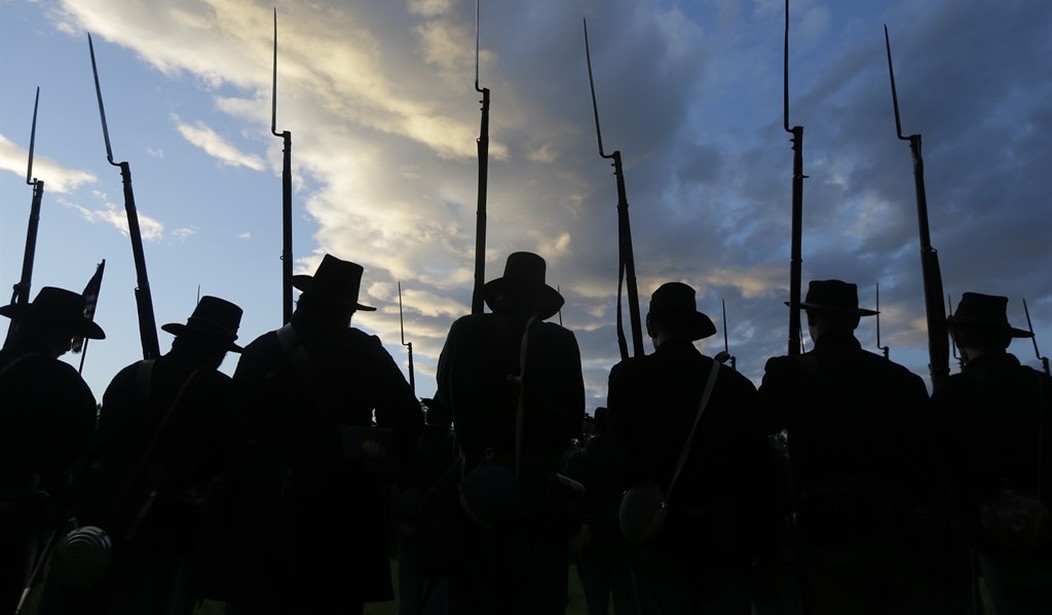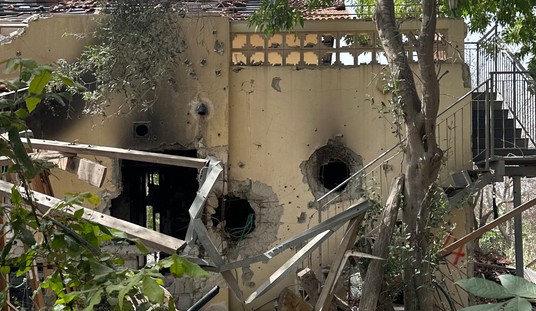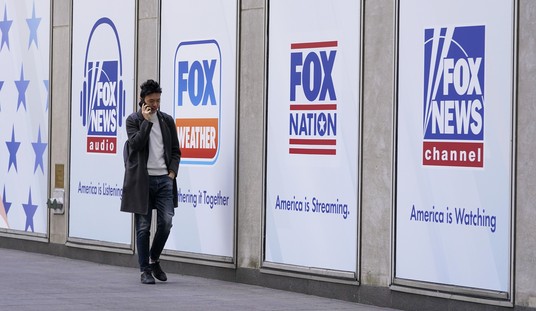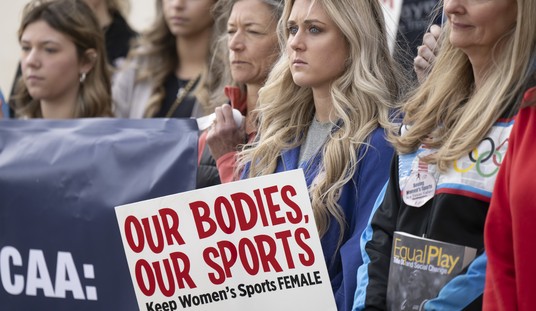The 1863 Battle of Gettysburg was a massive three-day conflict that stopped Robert E. Lee's second invasion of the North. It was the deadliest battle of the Civil War, with over 50,000 casualties, a scale of suffering never seen before or since in the United States.
Advertisement
The darkest moment of the battle came on Day Three with Pickett's Charge, in which three Confederate division were wiped out when they attempted to storm Cemetery Ridge, coming face-to-face with Union artillery. The Union won victory and had new life injected into its war effort. The Confederacy saw its best chance at demoralizing the North slip away.
The Strategic Situation in the East May – June 1863
- Union Problems
- Military:
- The Union had lost several battles in a row in Virginia, most notably (and recently) Chancellorsville.
- Lincoln could not find an army commander that he could trust.
- Military:
- Political:
- The lack of Union success was encouraging the peace movement in the North. Copperheads (anti-war Democrats) said the war needed to be ended right away and the Union restored to the way it was.
- The Union imposed a draft in 1863. The draft was very unpopular and helped the Copperheads gain support.
- Confederate Opportunities
- In early May, Lee’s and Hooker’s armies faced each other in northern VA.
- Bragg and Rosecrans faced each other in east Tennessee
- Grant was operating against Vicksburg.
- Some Confederate leaders (including Davis) believed VA was not that important. They felt Lee should send part of his army to reinforce Bragg and/or Pemberton.
- Lee wanted to keep his whole army and invade the North again. This would take pressure off Virginia farmers and strengthen Peace Democrats in the North.
- Lee also felt that a successful invasion might even lead to British or French recognition of the Confederacy.
Recommended
Advertisement
Lee Moves North
- Lee was rejoined by Longstreet’s corps. He now has 75,000 men.
- He divided Jackson’s old corps into two. Now he had three corps, one under Longstreet, one under A. P. Hill, and one under Richard Ewell.
- On June 9, when Lee was preparing to set off, his cavalry (led by Jeb Stuart) was attacked by Union cavalry under Alfred Pleasanton at the Battle of Brandy Station. This was the largest cavalry battle ever held in the northern hemisphere. There were 10,000 men on each side. In the end, Stuart drove the attacking Federals away.
- Bio on Stuart (30, WP, had fought in Indian wars, dashing and gallant). Best cavalryman for intelligence gathering. But his pride was stung by Brandy Station.
- The Confederates moved rapidly to the north. On June 16, the Confederates began crossing the Potomac and fanned out over southern PA.
- Lee’s army seized food and other supplies from the locals and paid them with Confederate money (which was, of course, useless in the North). They also seized free blacks and sent them south into slavery.
- Hooker told Lincoln he wanted to capture Richmond. Lincoln told him to instead go after Lee. Hooker quarreled with Lincoln about other issues, and he finally submitted his resignation, which Lincoln accepted.
- On June 27, Lincoln appointed George Gordon Meade as commander of the Army of the Potomac (this is the fourth Army commander in just 7 months!). Meade, another West Pointer, had worked his way up through the army ranks and had done well. People called him the “Damned Old Goggle-Eyed Snapping Turtle.” He was good with logistics and topography (as a former engineer).
- Determined to redeem himself after Brandy Station, Stuart made a long ride around the Union army. This deprived Lee of valuable intelligence. Lee learned of Meade’s appointment and the Union march northward from an actor. He ordered his army to re-concentrate. Their orders were to meet at a small town called Gettysburg.
Advertisement
Day One (July 1)
- Part of Lee’s army under Henry Heth marched to the town of Gettysburg looking for shoes, which the rebels dearly needed.
- Near Gettysburg, Heth’s division ran into a division of Union cavalry led by John Buford.
- Both sides poured reinforcements into the battle so that it turned into a rather large battle
- Ewell’s corps, coming down from the North, was able to flank the Union left (with Jubal Early ably serving).
- Lee gave the order to push the assault. The outnumbered Union soldiers (only two corps) were shattered. One corps lost half of their numbers as casualties.
- The Federals retreated back through the town and were rallied by General Winfield Scott Hancock. They occupied high ground to the east of the town (Culp’s Hill, Cemetery Ridge). A sign near the entrance to the cemetery read “All persons found using firearms in these grounds will be prosecuted with the utmost rigor of the law.”
- Lee ordered Ewell to continue the attack, but his order was ambiguous (“if practicable”), and Ewell halted the attack.
- The first day was thus a major tactical success for the Confederacy.
- That evening, the rest of both armies arrived, except for one Confederate division (Pickett’s). The bluecoats spend all night entrenching, building breastworks.
- The Confederate army was wrapped around the Union position, which resembled a fish hook. The Federals occupy the high ground and have good interior lines.
Day Two (July 2)
- Longstreet urged Lee to redeploy the army, trying to place it between Washington and the Federal army. Lee refused, saying “No. I am going to whip them here, or they are going to whip me.”
- 65,000 Confederates faced 85,000 Federals. Lee had no idea of the Union army’s strength, since he had not heard from Stuart.
- Lee ordered attacks on both ends of the Union line. The Union right was at Culp’s Hill and Cemetery Hill, and the left was at Big and Little Round Tops. Between the ends, it ran across Cemetery Ridge.
- One Union corps commander, Dan Sickles, moved his corps off the ridge without orders. He moved it forward closer to the Confederate potion, thinking he could better use his artillery there. This created a bulge and gaps in the Union line. Meade had to send units to plug the gaps, and this weakened the Union center and right.
- A. P. Hill was ordered to threaten the Union center.
- Longstreet was assigned the job of attacking the Union left. He was not able to launch the attack until 4 PM. His forces encountered stiff opposition in “Devil’s Den”, a heavily wooded and rocky area where Sickles’ forces are, as well as in a wheat field and a peach orchard. Sickles lost a leg in the battle.
- Longstreet almost captured Little Round Top, a hill just south of Seminary Ridge. At first, the hill was undefended. But at the last minute, a Union corps is rushed to the top, and they push back repeated rebel assaults (Tell story of 20th Maine, which ended up catching 400 Confederates).
- At one point, the Union center had developed a mile-long gap. The rebels threatened to cut it in two, but Meade plugs the hole at the last minute.
- At dusk, Ewell attacked the Union right, almost took Cemetery Hill and Culp’s Hill, but narrowly failed.
- That evening, Longstreet again urged Lee to redeploy. Again, Lee refused.
Advertisement
Day Three (July 3)
- Lee ordered another attack on Culp’s Hill, but this failed. Stuart was supposed to get behind the Federals and attack them by the rear, but he was stopped by Federal cavalry who were led in part by 23-year-old General George Armstrong Custer.
- By late morning on the 3rd, Lee felt that the Union center would be weakened (because he believed they had sent many troops to the right and left the previous day).
- He ordered three divisions (13,000 men), under George Pickett, Isaac Trimble and Johnston Pettigrew to march about a mile up a gentle slope and attack the Union soldiers on Cemetery Ridge.
- The attack become known as “Pickett’s Charge.” (misnomer) Meade saw it coming and was ready.
- The Confederates began with an artillery barrage of the hill. Union artillery responded and then stopped. (This is the largest artillery barrage ever to occur in the western hemisphere…it was heard in Harrisburg, PA, 40 miles away!). Lee assumed the Union artillery had been disabled.
- When Pickett asked Longstreet for the order to march, Longstreet couldn’t bear to give it. He just nodded.
- When the soldiers set off, the Union artillery opened up again, decimating the Confederate line. About half of the Confederates became casualties. The attackers were forbidden to fire until they were right on the Union lines.
- A few Confederates reached the Union position, but all were killed or captured.
- The Confederates retreated to where they started, but only half make it back.
- Lee told Pickett to rally his division for a possible counterattack. Pickett replied “General Lee, I have no division.” Pickett never forgave Lee.
- Lee told his men “All of this is my fault.”
Advertisement
Outcome
- The Confederates suffered 28,000 casualties (1/3 of the army). 17 of 52 Confederate generals were casualties. The Union lost about 23,000 men. Lee lost 1/3 of his army.
- The total number of casualties was 51,000, making Gettysburg the bloodiest battle of the Civil War (in terms of total casualties).
- Many regiments were almost destroyed. One TN regiment started with 960 men. When Gettysburg began, only 365 remained. By the end of the first day, there were only 60 left. By the end of the battle, only 3 had survived.
- Lee retreated back to Virginia on July 4 (which had a lot of symbolic significance).
- Meade wanted to pursue, but doing so was nearly impossible. The Confederate position would have been too strong.
- The battle was undoubtedly a Union victory, but many in the North felt it should have been a much bigger victory. Lincoln was very disappointed that Meade did not do more to destroy Lee’s army.
- The Confederacy did not see it as a major disaster. It had no negative effect on Lee’s reputation. (Although Longstreet later said, “Gettysburg was ground of no value. That day was the saddest day of my life.”)
- It was not the “turning point of the war” although it did stop Confederate momentum. This was the last time Lee would invade the North, and it probably made European intervention impossible (they didn’t know that at the time, of course!)
- Lee wrote Jefferson Davis and offered to resign. Davis refused to accept it.
- A few months later, Lincoln came to dedicate the national cemetery there and gave the now-famous Gettysburg Address. (Read entire speech)
Advertisement

























Join the conversation as a VIP Member